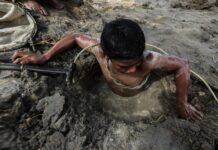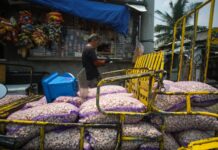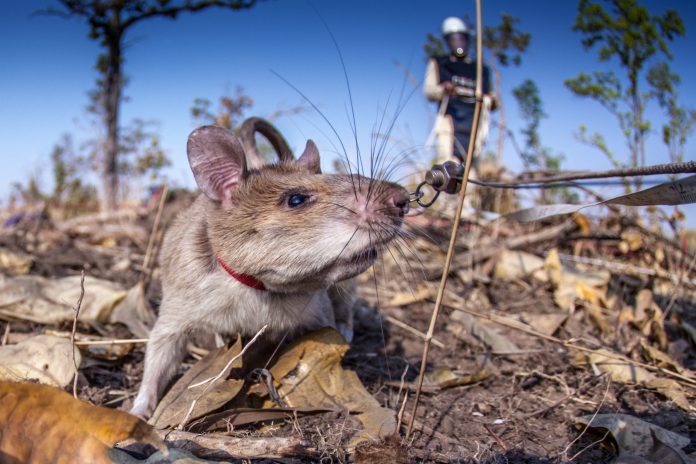
Landmines have left thousands of Cambodians dead or without limbs. but thanks to a task force of trained rats, these killer mines are being sniffed out, and removed
Text and Photos Aaron “Bertie” Gekoski
“I try not to talk about politics too much,” says Suon Rotanna, looking at me from beneath his camouflaged cap. His eyes glaze over for a moment, locked in memories, before a shake of his head and a long exhale of smoke. “Politics took my parents. And it took my leg.”
Suon is one of an estimated 40,000 Cambodians who lost limbs in one of the most savage civil wars in recent history. From 1975 until 1979, the Khmer Rouge – led by Pol Pot – attempted to transform Cambodia into an agrarian utopia, an extreme movement based around rural life.
Up to two million skilled labourers were massacred, along with the educated; wearing glasses or speaking a foreign language was enough to condemn you to death by starvation, torture, disease or execution. Many others, often of a young age, were forced to fight in Cambodia’s jungles.
Suon was a child soldier. His father was killed in front of him in 1976, and at the age of 14, his grandfather – a leader in the Khmer Rouge – sent him into the jungle near the border with Vietnam. It was here that Suon trained to be a soldier.
I try not to talk about politics too much. Politics took my parents. And it took my leg.
-Suon Rotanna, child soldier
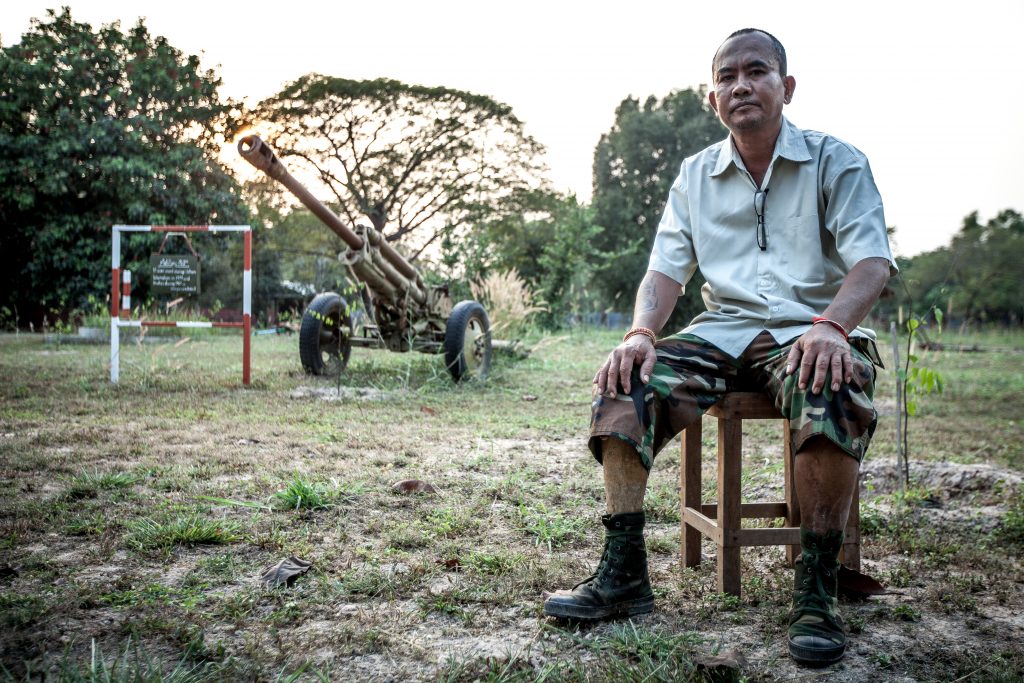
“Every day we were scared for our lives,” he recalls. Friends and colleagues were slain, accused of being “lazy”, or spies for the CIA. It was kill, or be killed.
And so, Suon shot his boss. “Otherwise, I knew that one day, it would be me.”
He spent the next 14 years in the wilderness fighting against the Vietnamese, until one misplaced foot turned his world on its head. Suon had stepped on an anti-personnel landmine. Designed to severely debilitate rather than kill, the landmine blew off his foot and lower leg, disabling Suon, as well as those who loyally stuck by his side.
It might sound like the plot of a horrifying Hollywood movie, but Suon’s story is an all too familiar one in Cambodia. It is thought that up to 10 million mines were laid over a 30-year period, leaving behind approximately 40,000 disabled people – and counting, as dozens more people are still killed every year.
Whilst Cambodia’s war officially ended decades ago, work continues to free the country of explosives. But as one of Southeast Asia’s poorest nations, the issue today is how to do this quickly, safely, and cost-efficiently.
An Unexpected Solution
An hour’s drive from Siem Reap, in a large plot of scrubland, Victoria scurries along the baked turf, nose to the ground. Attached to a harness tied between two handlers, she works tirelessly, only stopping for the occasional groom.
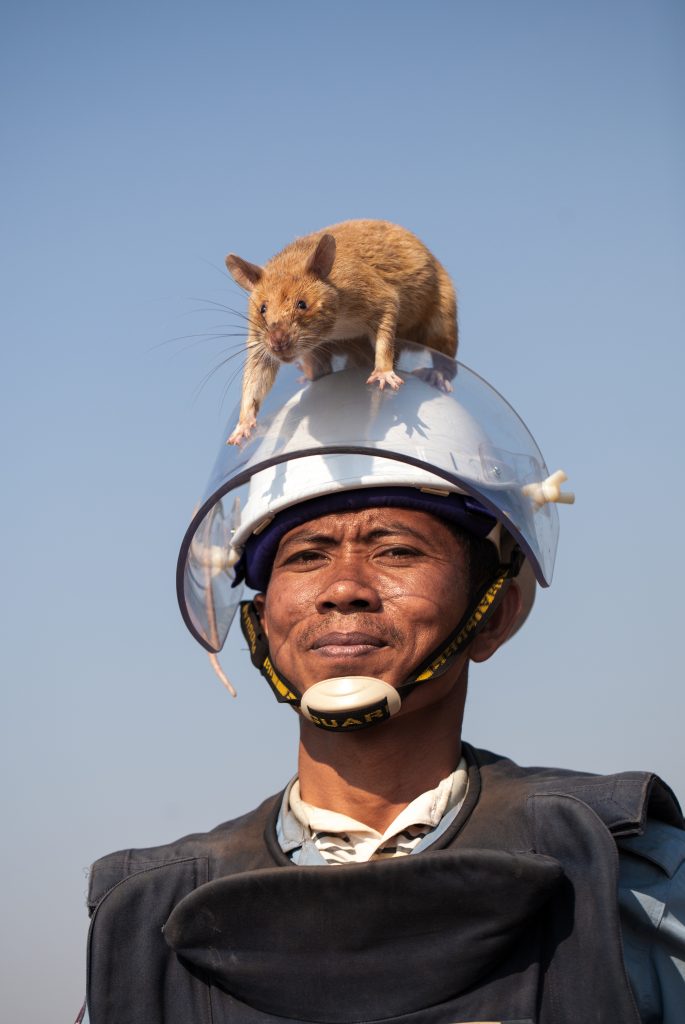
Victoria is one of 13 giant African pouched rats – dubbed HeroRATs – trained by the Tanzania-based charity, APOPO. Working in partnership with the Cambodian Mine Action Centre (CMAC), these organisations have partnered with these unlikely mine-detectors to undertake the mammoth task of clearing Cambodia of landmines.
The rats – which can grow up to one-metre-long, from twitching nose to the tip of their tail – have all undergone extensive training at APOPO’s headquarters in Tanzania. Here, they are taught to sniff out TNT, the explosive used in landmines.
APOPO first started utilising the rats’ excellent sense of smell in Mozambique and Angola, before beginning their Cambodian operation in January 2016. Since then, they have helped clear seven minefields.
They have also given over 800,000 square metres of safe, mine-free land back to local communities.
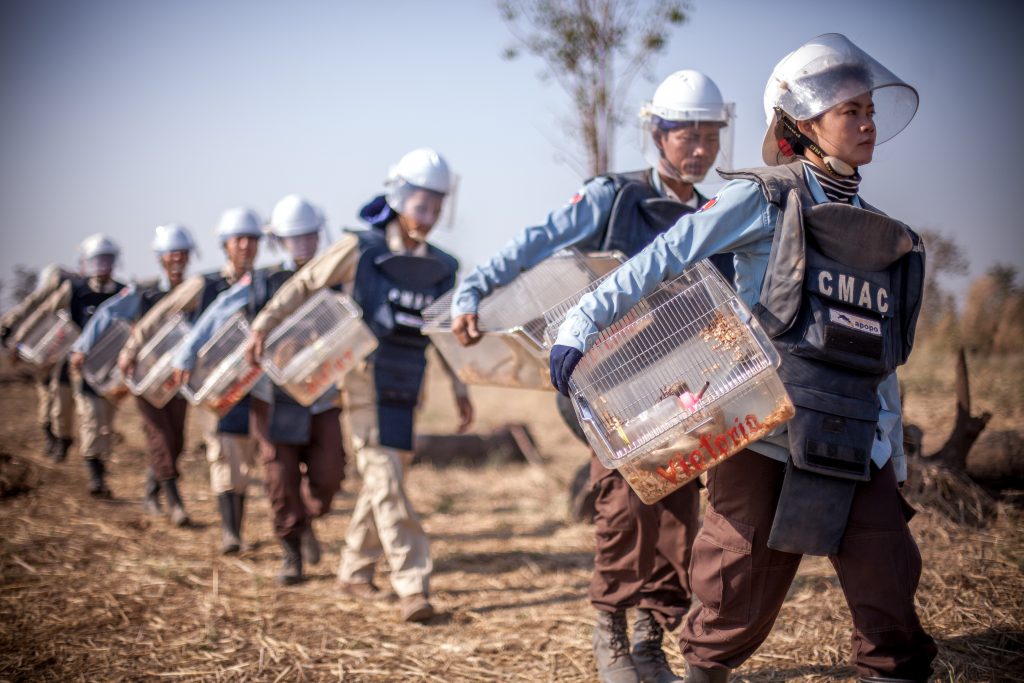
I thought APOPO were crazy when they said they were going to use rats. People used to hunt them for food, but after they heard how useful rats are for landmine clearance, they stopped killing them.
–Soeun Prom, APOPO Programme Officer, Cambodia
The rats are surprisingly fast workers, covering an area the size of a tennis court in around half an hour. This could take a person up to four days, as metal detectors pick up all forms of fragmentation and scrap metal, not just mines.
Once a rat comes across an explosive’s scent, they indicate the location by scratching on the soil above. The rats are quite safe, as they aren’t heavy enough to detonate the mine. Their reward? A chunk of a banana or a few nuts. Rats, quite literally, work for peanuts.
“I thought APOPO were crazy when they said they were going to use rats,” explains APOPO’s Programme Officer in Cambodia, Soeun Prom. “People used to hunt them for food, but after they heard how useful rats are for landmine clearance, they stopped killing them.”
It doesn’t matter that their rodents are an entirely different species: Locally, rats are now revered as life-saving celebrities.
Related: Black Water
Related: Democratisation, Interrupted
Starting afresh
After losing his leg, and unable to integrate into the society he’d left behind, Suon had a nervous breakdown. “I came out of the jungle and people were using this thing – money,” he recalls.
The following decades were something of a blur of therapy and rehabilitation. Once he had recovered and was able, he found work as a gardener at a local museum.
At the same time, Suon began learning one word of English a day. He was also caring for his wife, who had lung cancer – the result of years of working with explosives. When she died, he was refused the right to take time off to bury her. “That was the end of it. So I decided to set up my own museum,” he says.
So I decided to set up my own museum. I want to show people what we went through so it doesn’t happen again.
– Suon Rotanna, child soldier
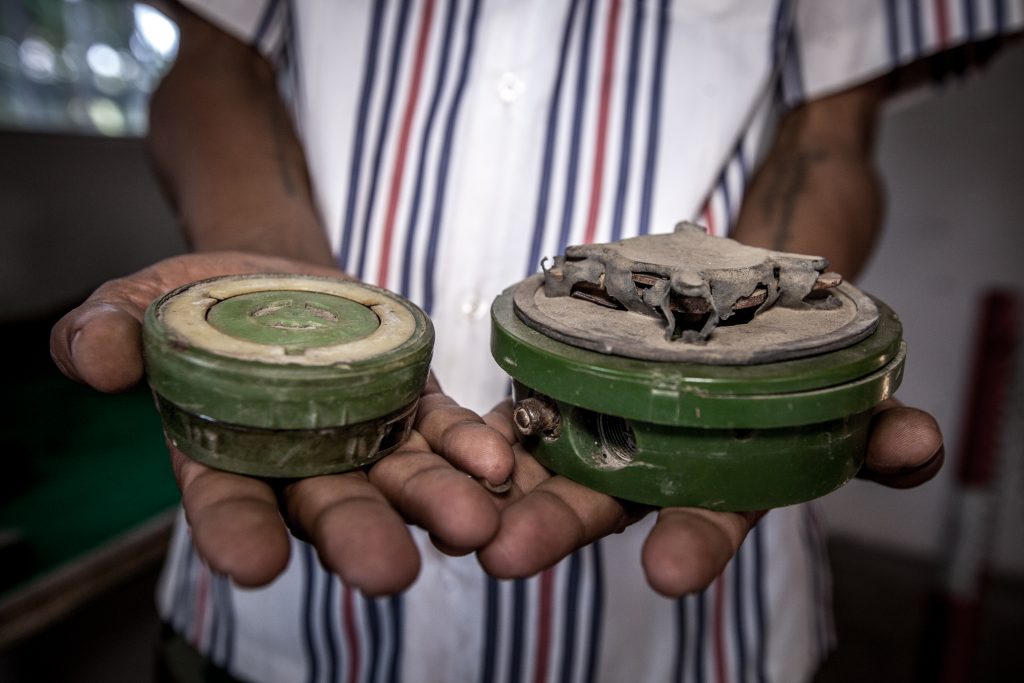
The War Remnants Museum opened last year. This rustic centre is located just outside of Siem Reap, not far from the famous temple, Angkor Wat. Every day, visitors are shown around a small field of artillery and a room filled with assorted landmines that were built to maim, kill, or even obliterate tanks.
Visitors are led around the museum by former child soldiers – including Suon – who lost limbs to the war. It is an authentic experience, quite different to similar tours in Cambodia.
For Suon, the museum is his way of atoning for the past and honouring those affected by landmines. “I want to show people what we went through so it doesn’t happen again.”
For more stories on Asian politics, see Asian Geographic Issue 126.





